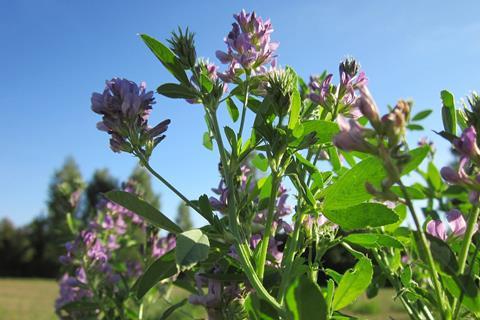Germinating Arabidopsis (thale cress) and alfalfa with a microbe taken from the roots of a common desert plant has been shown to help them to thrive under drought conditions.

“Mitigating the effects of drought on crop plants is an urgent goal for those of us working in agricultural biotechnology,” says Heribert Hirt from KAUST, who worked on the project with colleagues from Germany and across Saudi Arabia, including Khairiah Alwutayd, an assistant professor from Princess Nourah bint Abdulrahman University.
“The DARWIN21 desert initiative was launched 10 years ago at KAUST to isolate and analyze desert microbes. Our hope is that they can convey the same traits to crop plants as they do to desert plants, making them heat, salt and/or drought tolerant,” says Hirt. “This could contribute greatly to global food security.”
Screening the desert
As part of the DARWIN21 program, Hirt and his team have already isolated more than 10,000 desert microbial strains from desert soils and the roots of desert plants. They have screened hundreds of these strains, germinating Arabidopsis plants with each different strain, searching for those that significantly enhance the plant’s tolerance to drought.
For this particular study, which aimed to explore the molecular mechanisms behind enhanced drought resilience, they selected a bacterium strain from Pseudomonas argentinensis called SA190. SA190 originates from the root nodules of Indigofera argentea, a small shrub-like plant found in deserts and dry shrublands from the Sahara to India.
“Because we know so much about Arabidopsis — it is the genetic model in plant biology — we could analyze the precise molecular mechanisms and changes that SA190 triggered in the plant in response to drought,” says Alwutayd.
Drought stress genes
The team found that SA190 modifies the epigenetic status of important drought stress genes. These genes are not expressed under good growing conditions, but are exclusively expressed when plants are exposed to drought.
“SA190 boosted these genes only when needed, meaning that crop yields were not affected, which can be an unfortunate side effect of some drought mitigation efforts,” notes Alwutayd. “SA190 actively changed the plant root architecture and thereby enhanced the plant’s water use efficiency.”
The team then primed alfalfa with SA190, and these plants showed significantly enhanced drought resilience compared with controls.
“SA190 can easily be produced in large quantities in fermenters and the seeds of crops only need to be coated with the microbes,” says Hirt. “Once the seeds are disseminated onto the field, SA190 associates directly with the crop seedlings, thereby avoiding competition with other soil microorganisms. This is potentially a very powerful tool for helping plants resist drought.”







No comments yet